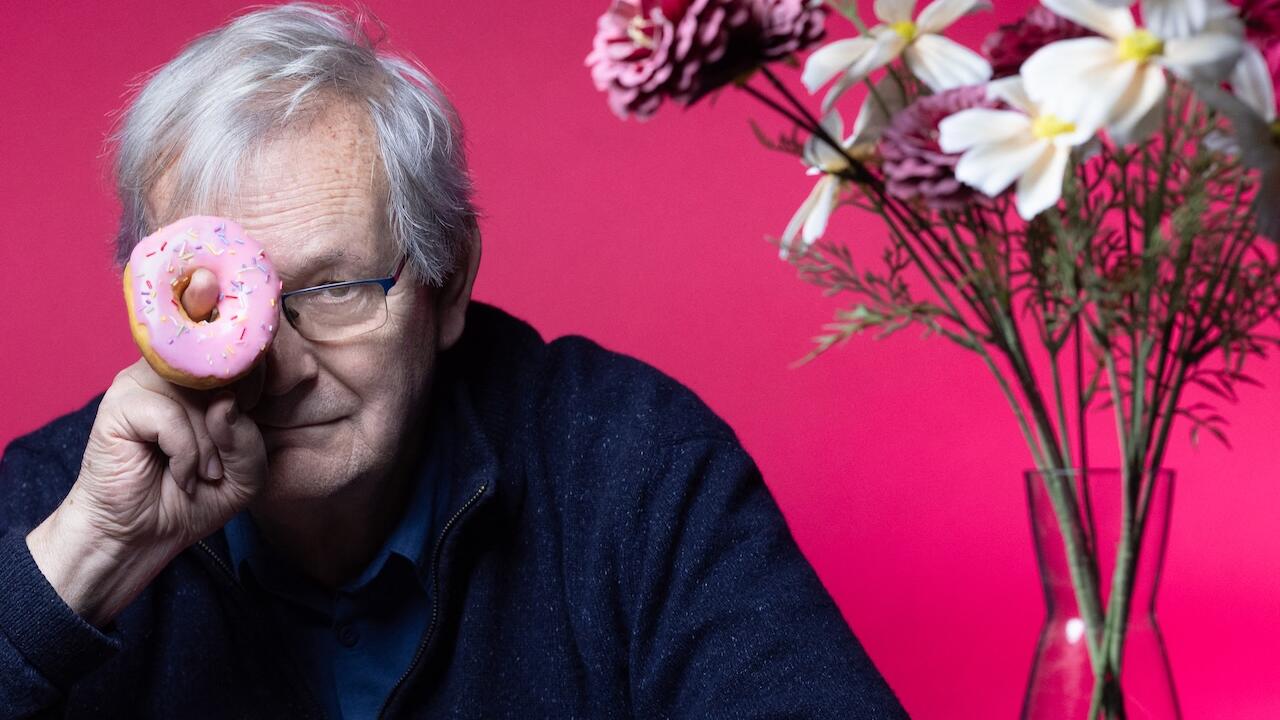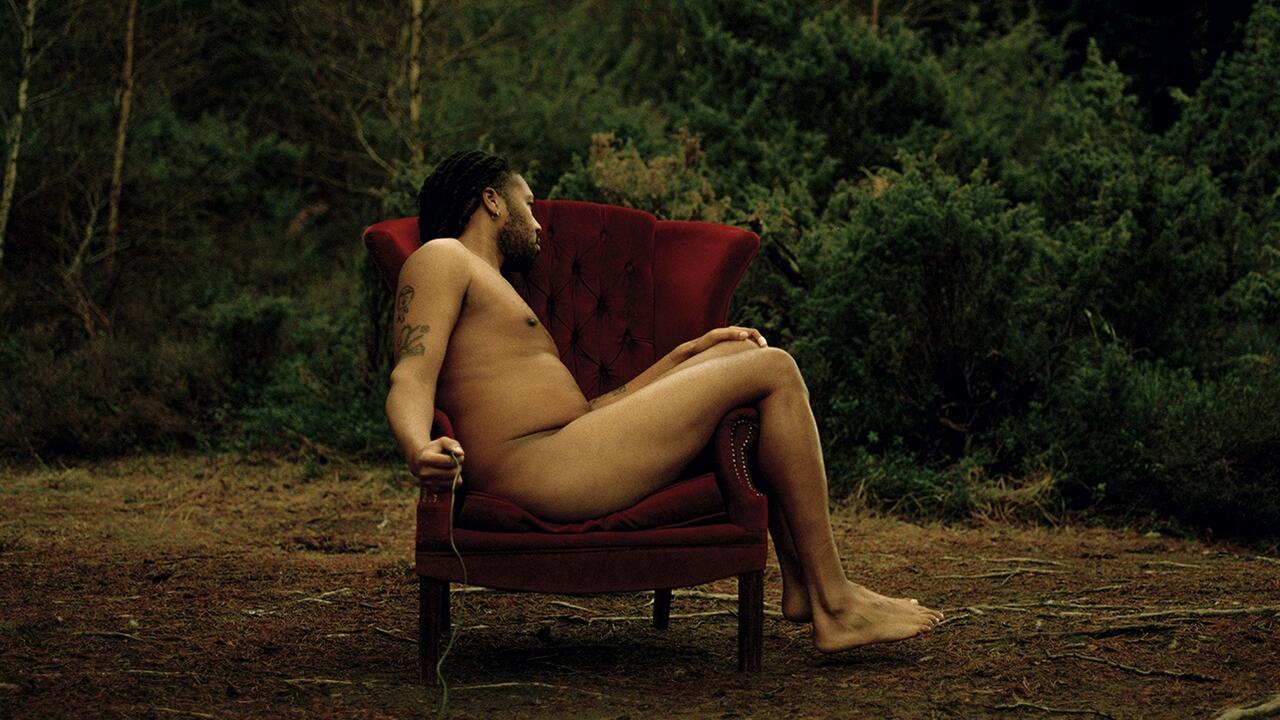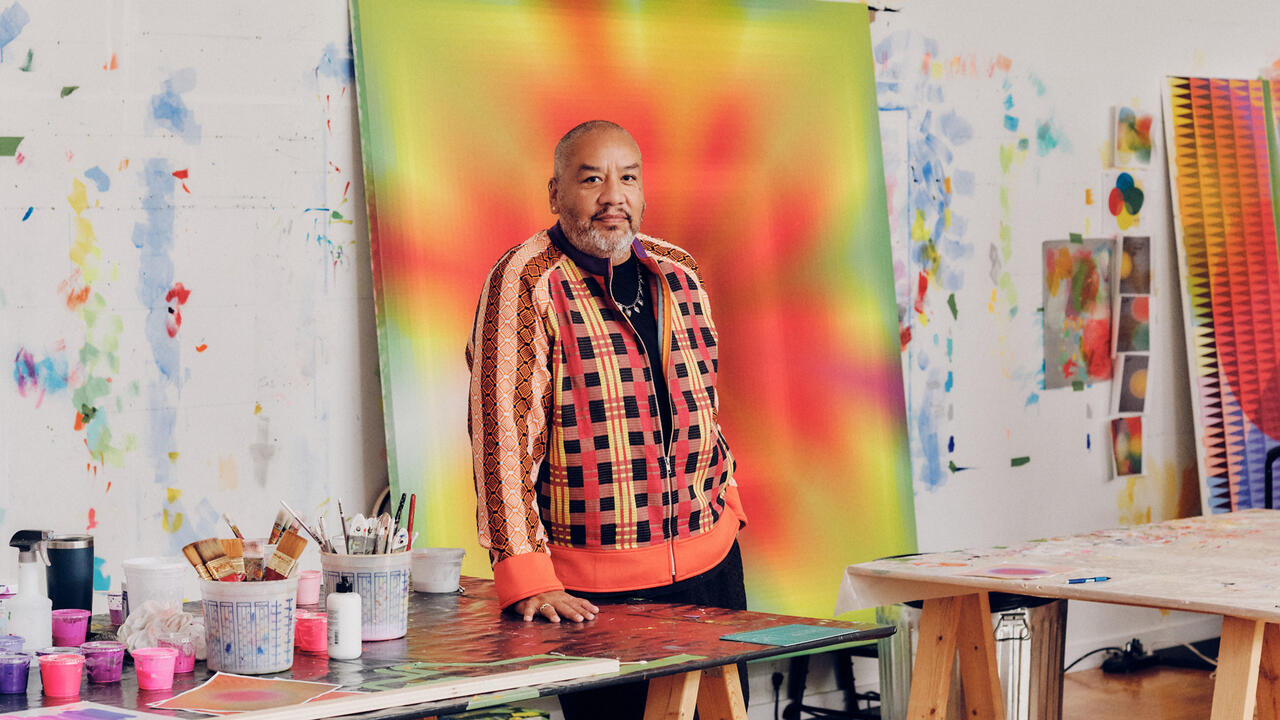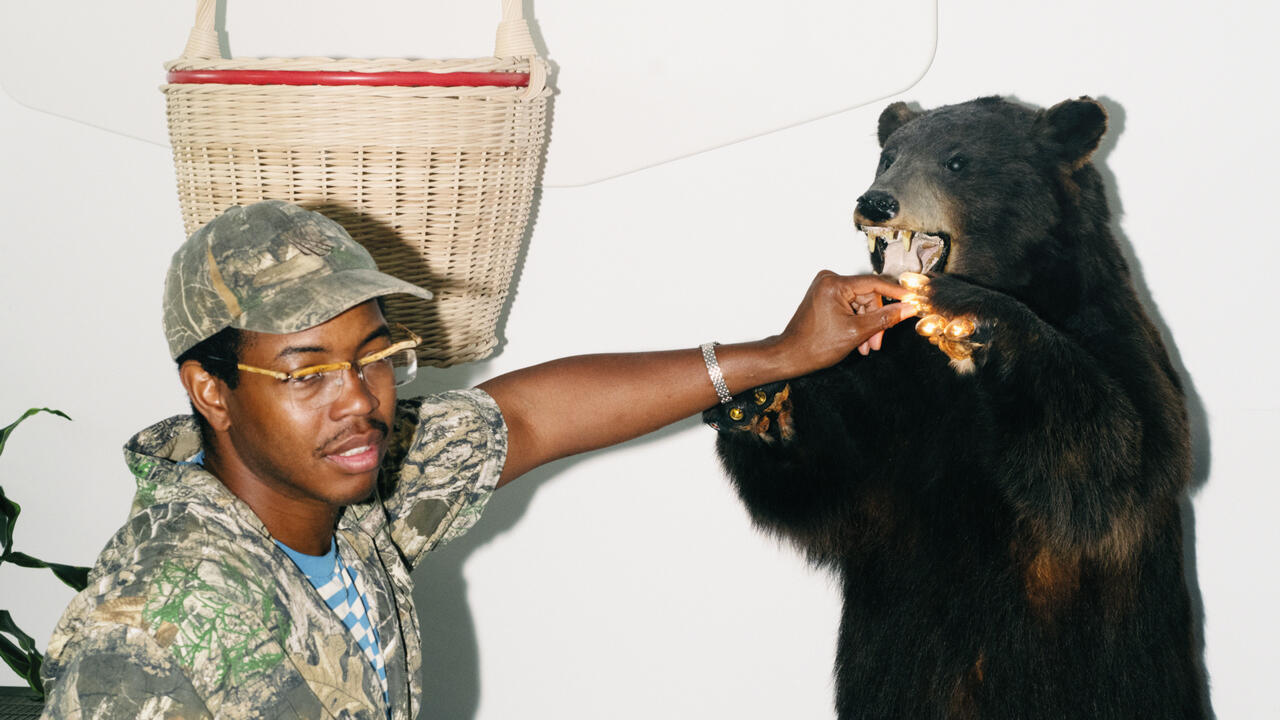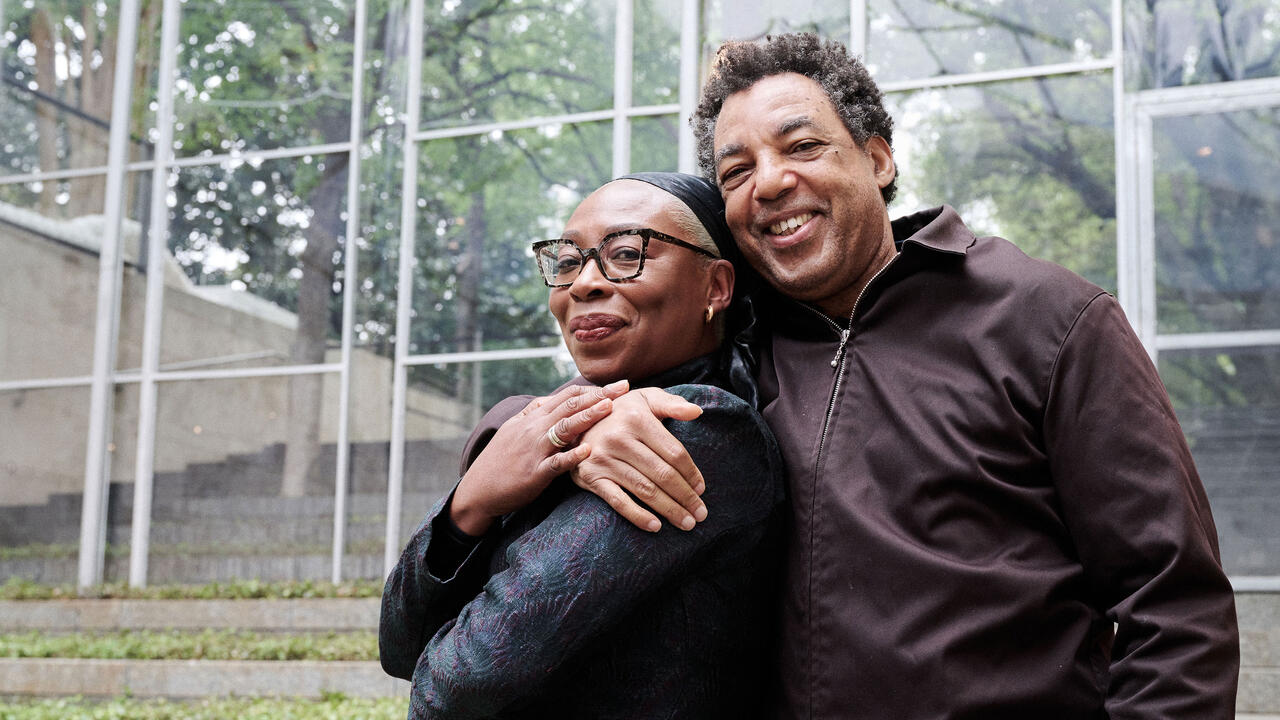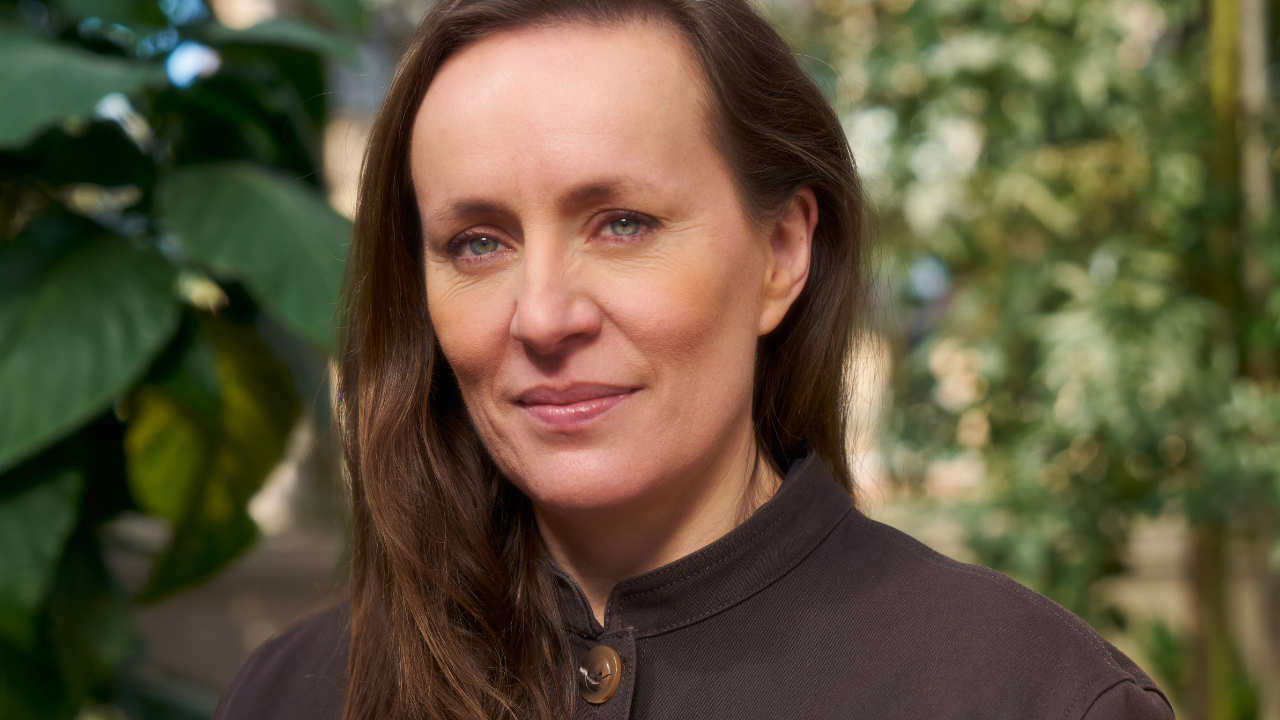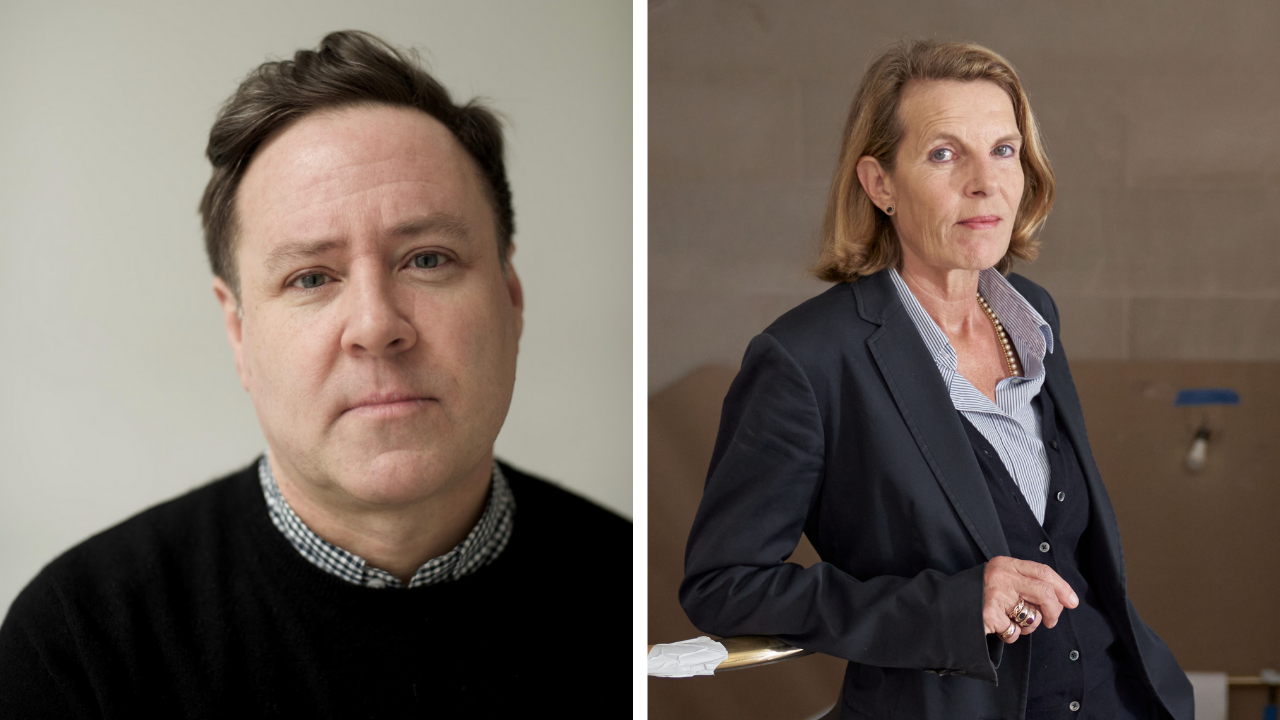Picture Protest
David Goldblatt discusses representation, censorship and his decision to remove his archive from the University of Cape Town
David Goldblatt discusses representation, censorship and his decision to remove his archive from the University of Cape Town

Paul Clinton In 2018 you’ll be having a major retrospective at the Pompidou looking at your work from its inception. When did you start?
David Goldblatt In my last years at high school, around 1947. Magazines like Life, Look and Picture Post were at their height, publishing long photo-essays. Television hadn’t yet become popular, so for many people these publications were their window on the world.
PC Did you try to break into those magazines?
DG I tried, but I couldn’t. In 1948, my father gave me a badly abused camera that my brother, Dan, had salvaged during the Second World War. I tried to generate some primitive photo-essays and failed. I was very ill equipped, not just mechanically, but in the beginning, I had no sense of how photographs work together.
Then the editor of Picture Post contacted me about documenting the beginnings of ANC defiance of unjust laws. One of my earliest jobs was covering a big African National Congress (ANC) conference in Johannesburg. I photographed vigorously for about two hours. The conference was very active with singing and dancing. At the end, I opened the back of my camera and the sprockets hadn’t caught the film. I didn’t have a single photograph. It was persuasive evidence that I wasn’t suited to news work.

PC One characteristic of your work is that you only obliquely hint at an oppressive condition or traumatic event. How did you start to develop that language?
DG I wouldn’t say it was a conscious development. I was shit-scared of violence so I avoided confrontation, whereas some of my colleagues have bravely been at the very coalface. But this was also a development of my interest in the conditions that lead to events, and the values they indicate.
PC Did your personal work, with its oblique criticisms of apartheid, also threaten your professional commissions?
DG It was sometimes tricky. We were all under police surveillance. I was on assignment for the New York Times in Ciskei, then one of the Bantustans. Ciskei had a small army run by Charles Sebe and funded by the taxpayer. So that his security people wouldn’t give me trouble, he gave me an official letter of permission to go anywhere in Ciskei.
I visited a large black-owned farm called Mgwali. It was surrounded by white owned farms. It was therefore a ‘black spot’ that had to be erased and its 5,000 inhabitants removed to what was called a ‘closer settlement camp.’
I was with the leader of this community when a car came speeding up to us and a white man jumped out, a security policeman. ‘Who gave you permission to be here?’ he demanded of me.
The hotel staff were remarkably interested in what I was doing. I told them that I was catching a plane from East London that night. However, I was pretty sure that if I did, my film would likely be fogged or lost. I paid my bill, got into my hired car and drove through the night back to Joburg.
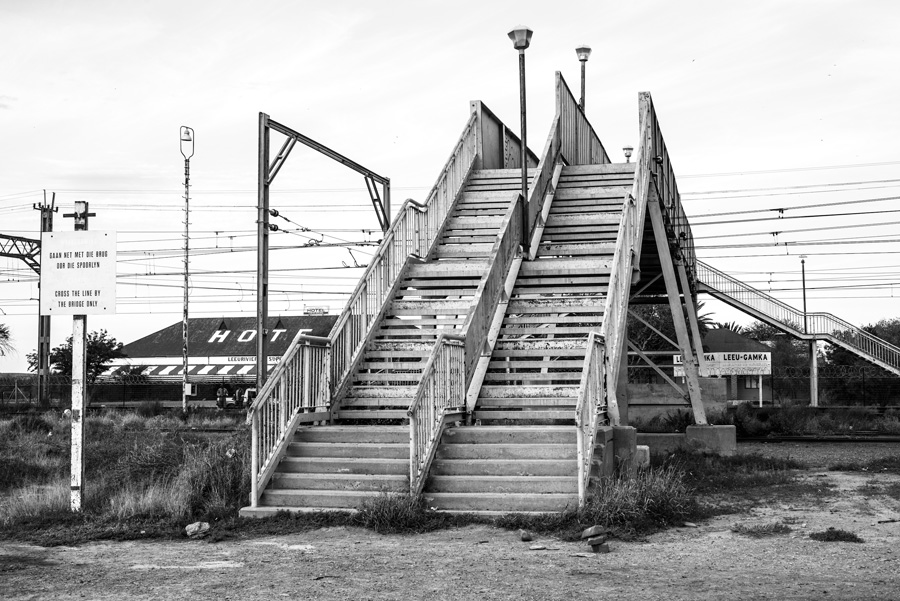
PC Will the Pompidou show include recent work?
DG Yes. On a recent road trip I stopped in a tiny hamlet called Leeu-Gamka. The main railway line between Cape Town and Johannesburg passes through it and there’s a pedestrian bridge across the rails.
Like everything else, railway bridges were segregated so that if I was coloured and you were white we had to go up different stairs. These bridges remain as vestigial museum pieces of apartheid. Future archaeologists will wonder what the fuck this is. Why have a footbridge in a tiny hamlet of no more than 2,000 people, and build it with two lanes wide enough to accommodate rush hour on a London tube? It’s beyond madness. The apartheid signs have gone, but the two-lane stairs remain.

PC Your photographs of South African goldmines led to a collaboration with Nadine Gordimer in 1973. Writers have been very important to you and your work.
DG Yes. There have been several South African writers whose work became closely related to my photography. Nadine and I were both brought up in mining towns. Her first book of short stories in 1948 was very important to me: for the first time I experienced writing that put into acute observations what I knew intimately but inarticulately of this place.
Around 1964, I started photographing the Witwatersrand mines which were dying. The industry was moving into new gold fields further west. While I was photographing I was very conscious of Nadine’s observations. I didn’t know her, but was introduced through a friend and I asked whether I could show her my work. She liked it and we collaborated on a book.
PC What prompted your shift into colour?
DG The death of apartheid and the wish to become more expansive. During apartheid I did a lot of commercial colour photography. But for my personal work it seemed too sweet and lacked the more abstract quality of black and white, which is both of, and yet not of reality.

PC Having had a career so intimately bound up with the apartheid-era, how did you find a new direction after it ended?
At first, I didn’t have a tight focus, so I thought that I would really like to look at the whole country in colour. I soon realized many places didn’t interest me and that I can’t photograph conceptually. I need to be excited, provoked, irritated or be in love with something outside of my own mind. In the last few years I’ve returned to black and white. Black and white was what I used because I was angry and frightened during the years of apartheid and I’m angry and frightened again.
PC Can you talk a little bit about the Market Photo Workshop and your involvement with a younger generation of photographers in South Africa?
DG In about 1985 I recognized that many young black people from the townships were interested in the photographs we were showing at the Market Theatre, although very few of them had any knowledge of photography.
I raised some money and invited the photographer Gillian Cargill to teach at the first workshop – I never taught there. In the beginning, we worked in the corners of rehearsal rooms, but eventually we got an old post office as premises.
Under apartheid the Market Theatre was internationally famous, but after the regime ended it became redundant and financially bankrupt, later being absorbed into the Department of Arts and Culture. That was the kiss of death.
In a country like ours, one has to maintain an arm’s length relationship with government, or your independence gets compromised.

PC Can we talk about why you first started photographing ex-prison offenders?
DG We have a notoriously high crime rate in South Africa and, having several times been a victim, I wanted to meet people who had committed crimes. I want to meet them not as prisoners, but closely, as ordinary people, paroled or free. I tell them I am curious. I am not going to sensationalize their stories and I am not doing this to make money out of them. After paying taxes and gallery commissions I give any income derived from this work to people working with offenders.
PC How did you find your subjects?
DG Mainly through organizations that deal with people who had offended. I want to go back with those people to the scene of the crime for a portrait and to hear about their life. Going back to the scene of crime is probably no pleasure for them. I pay people to do this and to sign a release allowing me to publish and exhibit the photographs and words.
PC How have the offenders responded?

GB Perhaps because I’m not an activist or social worker or reporter, people have been very open with me. This is possibly the first time they’ve been allowed to tell their story without being judged.
PC What differences have you noticed between the criminal populations of the UK and South Africa?
DG Generally, ex-offenders in the UK had at least some respect for the law. In England, I met a man who intended to rob a post office using an empty pistol, fearing a heavy sentence.
In South Africa, there is nothing like that. If you’re going to rob a post office, you go in with guns blazing.
PC Has there been any regret on the part of the ex-offenders?
DG I always make it clear that this photograph might come to bite them. So far we’ve only had one person who changed her mind, and we took her work out.
PC Why have you cancelled the bequest of your archive to the University of Cape Town?
DG In my opinion, the decision of the university to remove or conceal any work of art in their collection that was potentially offensive to black students was in conflict with freedom of expression, and therefore with constitutional democracy. This was not simply a curatorial decision. It interfered firstly with the intensions of artists whose work had previously been accepted into the university’s collection. Secondly, it raised a suppressive barrier to people who might otherwise have made certain types of work which might or might not have been pleasing or offensive to black or other viewers.
I’m not taking my work out of SA. I’m withdrawing my work from UCT because I’m in fundamental disagreement with their policy of censoring work in their collection (which is also by implication a censorship of work not yet created). If I were to leave my work with UCT it would be endorsing their policy of censorship with which I’m in fundamental disagreement.
UCT maintains that it is somehow ‘okay’ to partially censor work. This is equivalent to trying to be a little bit pregnant.
PC You’re talking about the aftermath of the Rhodes Must Fall campaign.
DG Yes, the students objected to that statue being central to the campus but the university administration did nothing, so when a guy threw human faeces over it, that was a culmination rather than a beginning.
After the removal of the statue the university could have held exhibitions to have a public discussion about what can and cannot be shown on campus. If at the end of that process you put away certain work as unacceptable, that’s fine. Instead, they appointed a committee to decide selectively which pieces to keep and which to remove. I found this to be a problematic policy because it abrogated freedom of expression. They made no attempt to consult the artists whose work was removed or covered up.
The students burnt 20-odd artworks on campus, including photographs of Molly Blackburn: a white woman who was a hero of the struggle. The student movement has been essentially anti-democratic in its destructiveness.

PC Then there’s the issue of Willie Bester’s statue.
DG Willie Bester had made a metal sculpture of Saartjie Baartman, also known as the Hottentot Venus, an Eastern Cape woman who was publicly exhibited in 19th century France and England because of her physiognomy. Her genitals were even displayed posthumously in a museum.
The students objected to Bester’s nude sculpture and draped her in cloth. The university has done nothing to remove that cloth or the sculpture. This is a violation and misunderstanding of the artist’s intentions. Under apartheid everyone was categorized by race. Bester wasn’t easily classified, so he was documented as ‘coloured other 07’. He is an extreme form of the ‘Other’ so he has a special relationship to Baartman which the sculpture articulated. But the university has fucked it. This fear of offending some students is taken to an extreme.
PC The University has said that its policy of removing or concealing certain artworks is there to protect the works.
DG What kind of protection is it? Tomorrow, students could say they will not allow the work of Muslims or Jews or people with green eyes as it’s against their principles. It was incumbent on the University to respond to the protests by showing that they were not prepared to tolerate violent violations of democratic rights.

PC Do you feel that there’s been a missed opportunity for a broader discussion on representation?
DG Absolutely. I think that the university was duty bound to hold public discussions, particularly in view of its history in the years of apartheid when it strongly defended academic freedom.
PC Why have you moved the archive to Yale rather than relocate it within South Africa?
DG I knew that the country had no other suitable facilities. It was by coincidence that I was invited by Yale and the New York Public Library to take my work there, pending negotiations.
PC You’ve been criticized for making a decision that limits the access of South Africans to your work.
DG I was very clear with Yale that I want a digital archive to be located somewhere in South Africa. There will be an archive in South Africa.
PC Could anything change to make the universities act in a way more in keeping with the kind of freedoms you value?
DG Several years ago, at the University of the Free State Bloemfontein, some white Afrikaner students pissed on the food of some black workers and the university expelled them. Instead of going into panic mode, the rector Jonathan Jansen invested in major artworks on campus. The idea was to show both staff and students, that another way of thinking is possible.

PC Do you think that this destruction of artworks is part of a broader culture of forgetting and historical revisionism? Is it wider than the universities?
DG The art community in South Africa is distinguished for its silence. When there was a protest about a painting of Jacob Zuma adopting a Leninist stance with his cock out – Brett Murray’s The Spear (2010) – there was a violent reaction by the ANC and the Communist Party. The Communist Youth League threatened to burn down Goodman Gallery, where the painting was exhibited. Eventually the ANC agreed to stage a peaceful march on the gallery. The party bussed in about 3,000 people. There were just four of us in a counter protest. I’m told that there was quite a lot of activity on social media, but that’s not the same as being there and being seen.
PC You can do both: they’re not mutually exclusive.
DG They’re not mutually exclusive. We also face threats of official censorship. The Protection of Information Act would, if passed by parliament in its original form, have severely limited freedom of expression. After this I returned an award that was presented to me by the president, but when I wrote to a colleague to do the same there was silence.
PC Do you think that’s fear?
DG I only know that when it’s necessary you need to stand up and be counted.
David Goldblatt is a photographer who lives and works in Johannesburg, South Africa. In 2017 he presented his ‘Ex-Offenders’ series in two prisons in Manchester and Birmingham, UK, and a documentary about his life, Goldblatt (2017) directed by Daniel Zimbler, premiered at the Encounters Documentary Festival, Cape Town, in June. In October he will be included in the inaugural exhibition at the A4 Foundation, Cape Town, and in 2018 he will have a major retrospective at the Centre Pompidou, Paris.
Main image: David Goldblatt, Willie Bester’s sculpture of Sarah Baartman covered in cloth by students of the Rhodes Must Fall Movement. Main Library, University of Cape Town, 14 May 2016 (detail), 2016, silver gelatin print on fibre based paper. Courtesy: the artist and Goodman Gallery, Cape Town / Johannesburg








